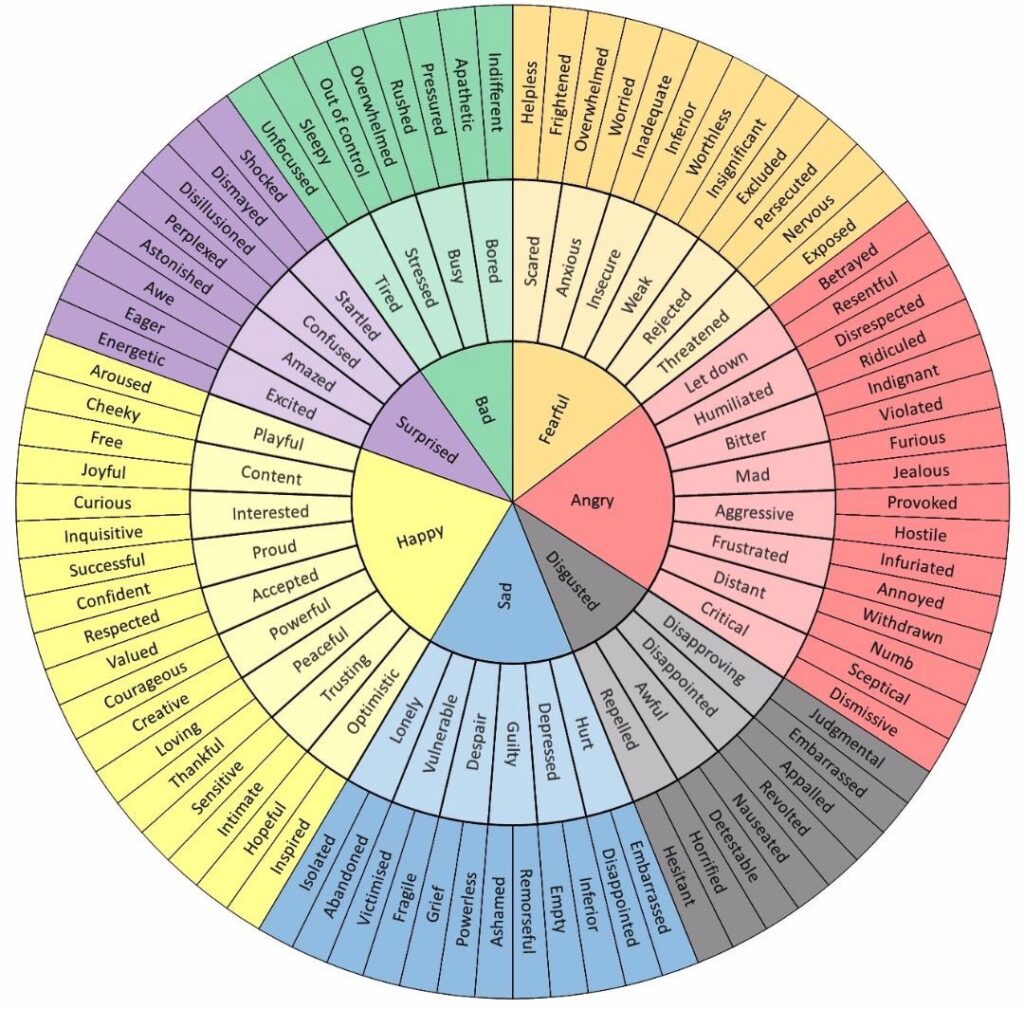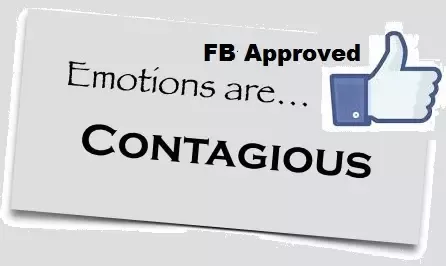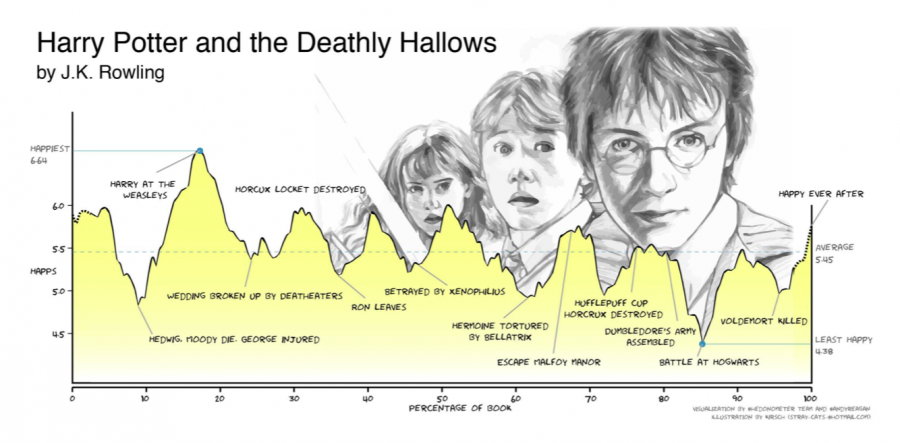Our everyday actions and decisions are largely driven by the emotions we are feeling at the moment, say research studies. And tech companies have been using that knowledge to increase their profits by molding and reshaping our emotions for years.
But how can someone or something that’s not even physically with you change your emotions, which are something that you feel internally?
That’s what we’re going to explore in this post. We’ll look at the importance of emotions, the role of modern technology in your thoughts and decisions, and finally, how to regain control of your life.
So, let’s begin.
What Are Emotions?
In 1990, psychologists Don Hockenbury and Sandra E. Hockenbury published a book entitled Discovering Psychology, in which they stated that emotion is a complex psychological state that involves three distinct components:
- A subjective experience
- A physiological response
- And a behavioral or expressive response.
This is just one definition. So far, many researchers have tried to define emotions and explain how they function, and the descriptions and insights of emotions have changed drastically over time.
For example:
In 1972, psychologist Paul Ekman said that humans have six basic emotions— fear, anger, disgust, surprise, happiness, and sadness.
Similarly, in the 1980s, psychologist Robert Plutchik introduced a new emotion classification called the “wheel of emotions.” This model demonstrates how different emotions can mix together and create an entire set of new emotions.

Following that, in 1999, Paul Ekman expanded his list, including emotions like embarrassment, contempt, excitement, shame, pride, amusement, and satisfaction.
More recent research by Lisa Feldman Barrett posits that there is no such thing as universal emotions at all. Barrett’s “theory of constructed emotions” argues that emotions are not reactions to external events but rather concepts constructed by our brains based on the interpretation of a wide range of data (for example, what our senses perceive and the bodily sensations we feel).
So, as you can see, our understanding of emotions is ever-evolving, and we have a long way to go to pinning down exactly how they work.
Nonetheless, the fact remains: your emotions are important, and they play a huge role in how you think and act.
Importance of Emotions
We have a wide range of emotions because we need them. They help us communicate with other people, act quickly in critical situations, and they have a substantial influence on our cognitive processes, like:
- Perception
- Attention
- Learning
- Memory
- Reasoning
- And problem-solving.
Emotions are also why you have “gut feelings” or intuition. Let’s look closely at how emotions help you in your daily life.
They Can Motivate You to Act
You may remember the feeling of anxiety before a nerve-racking exam. Will I perform well? Will I fail? What will happen if I don’t get good grades?
This emotional response may have motivated you to take necessary actions, leading you towards good grades.

This is just one example. The fear of being alone and unliked can push you to go out to social gatherings. Feelings of pride when you accomplish something can motivate you to keep progressing in your goals.
Your emotions motivate you to act, and in most cases, without an in-depth analysis of the consequences of your actions.
Help You Avoid Danger
Charles Darwin believed that emotions are adaptations that allow humans and animals to survive and reproduce.
He said that emotional displays are essential to our safety and survival. For example, suppose you encounter a hissing animal. Your brain automatically recognizes that the creature is angry and defensive, triggering you to back out, saving your life.
This is what a flight-or-flight response is—your body responding to the fear of being harmed and trying to protect itself.
Influence Your Decisions
Emotions have a major influence on the decisions we make. How we feel can control things ranging from what we want to have for breakfast to who we vote for in the next elections.

Even in situations where we think our decisions are guided purely by rationality and logic, emotions can be playing a part. This is why it’s super important to work on your emotional intelligence. Because the better your emotional intelligence, the better decisions you’ll make.
Help Others Understand You Better
While interacting with other people, your emotions give them cues to understand how you’re feeling. Improper emotional responses or displays can cause many misunderstandings.
Because of this very reason, evolution added the ability to emote appropriately in our DNA. We have that by default. It just needs polishing from time to time.
Help You Understand Others Better
Do you feel like you can read people? Know when they’re sad, angry, upset, even when they’re not telling you directly?
This might not just be your sci-fi fantasy becoming real. It might be an indication that you have high emotional intelligence.
Just like your own emotions send valuable information to others, their emotional expressions can give you a wealth of non-verbal social information.
This lets you build more profound and meaningful relationships with your friends, family, and loved ones.
How Does Technology Affect Our Emotions?
Before we dive into the how of technology’s impact on our emotions, we need to first ask if it’s even possible for technology to affect something so subjective as emotions.
And the answer to this is a resounding yes.
Turns out emotions aren’t as subjective to individuals as one might think. We all have emotional triggers. And thanks to evolution, many of our triggers are almost identical. This makes our emotions easier to predict and thus vulnerable to manipulative techniques.
So, tech companies simply use artificial intelligence (AI) to collect data on your behaviors and thoughts and the person you are, and with the help of machine learning (ML), they come up with ways to utilize that data for profit.
Have a look at some of the ways tech companies work with your emotions for profit.
AI and Emotions
There is a technology called emotion AI, or emotional AI. These are artificial intelligence computer programs that can detect human emotions.
Experts say that these machines understand not only the cognitive side of human communication but also the emotive side.

This allows artificial intelligence to detect, interpret, and respond appropriately to verbal and non-verbal signals when we communicate.
So far, machines have been designed to recognize, analyze and respond to things like smiles or changes in tone of voice. But researchers are actively working on integrating parameters like skin temperature and heart rate into emotion AI to make it more accurate at detecting emotions.
Here are a few real-life examples of how emotion AI is making its way into our technological world.
Amazon’s Alexa
In October 2018, Amazon revealed that they had patented a new version of their digital assistant, Alexa, which can detect a user’s emotional state and suggest appropriate activities. And not only that, it can even show you corresponding ads according to how you’re feeling at the moment.
Microsoft
In 2017, Microsoft revealed a similar patent for a voice assistant capable of reacting to your emotional cues with personalized responses, including “handwritten” messages.
Also, in 2018, Google received a patent for a smart home system that “automatically implements selected household policies based on sensed observations.”
These observations include things like limiting screen time until the home senses that you’ve spent at least 30 minutes outdoors or keeping your front door locked when your child is home alone.
And it says that the system can also recognize your emotional state and collect necessary data to optimize your experience.
And More…
Besides Google, Microsoft, and Amazon, many other startups are making their way into the emotion AI market. Some of the most recognized names are Affectiva, Beyond Verbal, EmoTech, and EmoShape.
In the case of EmoShape, their chief product is the Emotion Processing Unit chip (EPU). Embedding this chip in devices will allow them to start processing and responding to emotional cues.
“This takes it beyond other AI-based technologies that simply detect human emotions. Affective computing usually focuses on how machines can detect human emotions,” explains EMOShape’s CEO Patrick Levy-Rosenthal. “The vision we have at EmoShape is different since the focus is not on humans but on the machine side—how the machine should feel in understanding its surroundings and, of course, humans, and more importantly, the human language. The Emotion Chip synthesizes an emotional response from the machine to any kind of stimuli, including language, vision, and sounds.”
AI May Not Be Able to Accurately Track Emotions
Neuro researchers say there’s a huge gap between what people say and what they may actually feel. That’s human nature, and in most cases, we don’t have control over how something makes us feel. Let me explain.
In 2018, there was a commercial entitled “Alexa Loses Her Voice.” The 90-second ad begins with Amazon’s Alexa losing her voice and a cast of Gordon Ramsay, Rebel Wilson, Cardi B, and Sir Anthony Hopkins trying – and spectacularly failing – to replace Alexa.
This commercial was voted the best commercial, according to the USA Today Ad Meter.
Also in 2018, Coca-Cola produced a commercial for their new fruit-flavored Diet Coke line.
The commercial featured actress Hayley Magnus awkwardly dancing to the groove of the new mango-flavored diet coke.
“The Groove” was rated as the worst commercial of 2018.
So, seeing the votes, one would think that the Alexa ad made a larger impact. But that wasn’t the case, according to Paul Zak, neuroscience researcher, and chief executive officer of Immersion Neuroscience, whose team studied people’s neurologic immersion in the ads.
Upon assessing the viewers’ emotional engagement level, they found that “Groove” actually had a more significant impact.
This suggests that there’s little to no correlation between what people say and how they subconsciously feel.
And when you assign something as objective as artificial intelligence to this job, things might go south very quickly.
The Risk Bias of Emotional AI
One study found that emotional analysis AI assigns more negative emotions to people of certain ethnicities than others.
“My new study, published last month, shows that emotional analysis technology assigns more negative emotions to black men’s faces than white men’s faces,” said lead researcher Lauren Rhue.
Consider the ramifications of such analysis in situations like workplaces. If an algorithm consistently identifies an individual as exhibiting negative emotions, it might affect their career progression.
“AI is often also not sophisticated enough to understand cultural differences in expressing and reading emotions, making it harder to draw accurate conclusions. For instance, a smile might mean one thing in Germany and another in Japan. Confusing these meanings can lead businesses to make wrong decisions,” says a HBR article.
“In short, if left unaddressed, conscious or unconscious, emotional bias can perpetuate stereotypes and assumptions at an unprecedented scale.”
Our Devices Have Become an Extension of Ourselves
Although they’re merely tools, modern devices have become an extension of ourselves. So, because of that, their impact on our being extends beyond the physical level.
This gives tech giants the opportunity to reshape the content in our devices to align with their revenue goals. Have a look.
Emotional Contagion Through Social Networks
Emotional contagion is the idea of one person’s emotions transferring to another, leading to similar emotions and behaviors in both. Researchers have found that emotional contagion is more potently transferred through social media.
According to this 2014 research study, when someone shares an emotion, it grabs your attention. And by bumping up posts that you’re most likely to emotionally engage with, Facebook uses emotional contagion to increase the time users spend on their product.

“There’s little to indicate the importance and potential power of this Facebook team, launched in 2012 to help monetize the reams of freely volunteered information and make the company more appealing to both advertisers and investors,” says an NBC News article.
Facebook’s Emotion Lab
In a massive experiment, Facebook scientists tweaked 700,000 Facebook users’ profiles. The researchers eliminated “negative” messages from the news feeds of some users to make them more positive. Similarly, they tweaked the news feeds of some users to only show negative content, making the feed much more depressing. And they didn’t stop there.
As a control, they also deleted a random selection of messages.
Following this, Facebook received extreme pushback from the public, and experts termed this study “Emotions Lab.”
This study concluded by saying, “Emotions expressed by friends, via online social networks, influence our own moods, constituting, to our knowledge, the first experimental evidence for massive-scale emotional contagion via social networks.”
In response to this, Jim Sheridan, a member of the Commons media select committee, said, “this is extraordinarily powerful stuff, and if there is not already legislation on this, then there should be to protect people. They are manipulating material from people’s personal lives, and I am worried about the ability of Facebook and others to manipulate people’s thoughts in politics or other areas. If people are being thought-controlled in this kind of way, there needs to be protected, and they at least need to know about it.”
AI Can Now Make You Cry at the Movies
In 2017, researchers from the MIT Media Lab announced that they’ve successfully taught artificial intelligence to make you cry at the movies. How?
Their software uses a machine-based analytics algorithm to assimilate positive and negative comments and reactions from thousands of short movies and sample video clips. It then uses a deep neural network to watch these videos and identify different elements that are emotionally special.
This helps the neural network to construct an emotional arc.

Now, although this technology can manipulate human emotions, the idea behind this project is to help storytellers thrive at fulfilling infinite audience demands.
And in one way, this is good because it has the potential to significantly enhance our entertainment experience. But spectators aren’t the only ones who benefit. This has huge potential in the advertising industry, giving advertisers the opportunity to manipulate us emotionally.
Gamification
Gamification, as we already know, is a heavily potent concept that can change a user’s behavior. Gamification technology uses game elements in non-game contexts to increase user engagement and motivation.
I’ve written a separate post explaining gamification and its effects in-depth. So, give it a read.
What Can You Do?
“All of us are jacked into this system,” says Tristan Harris, a former Google employee. “All of our minds can be hijacked. Our choices are not as free as we think they are.”
As technology advances, tech giants gain more control over our emotions, decisions, thoughts, and actions. And we can’t change that because we need technology to survive.
So, are we helpless?
Not at all. There are things you can do to (at least) alleviate the control technology has on your life. Have a look.
Box Out Time to Put Technology Away
Let’s break down the 24 hours we have in a day. You likely spend 7-9 of it sleeping and 9 of it working, commuting, and doing other stuff.
You’re left with 6 hours.
Set aside 3 hours for dressing, grooming, eating, and doing household chores.
You’re now left with 3 hours. That’s what you genuinely have in your day.
So, would you like to use these precious 3 hours in front of a screen, scrolling, watching, and interacting with mindless posts?
Certainly not.
You’d want to use this time to do things that are actually meaningful. This is where screen time limits come into play. Setting aside a specific timeframe for using screens lets you use what time you have left for things that actually matter.Read my post “Screen Time Limits for Adults” for more information.
Understand Your Reasons for Your Tech Use
Why are you using your gadget?
- For stimulation?
- For validation or confirmation of importance (as in, I got so many notifications, messages, and emails, I must be very important)?
- Connect with other people?
- To have something to do when anxiety creeps in?
- To find an escape from the rawness of an experience or to feel in control?
This is super important to know because you don’t turn to mindless tech use without any reason. And it’s only when you identify those deep-rooted reasons you can start working on breaking yourself free of your compulsion to use your gadgets.
Take Control of Your Tech
It’s not that we can’t control the decisions our gadgets make for us. It’s just that we give in so easily. Here are some things you can do to take back that control.
- Do thorough research before buying things
- Sleep on things for at least 24 hours before making a decision
- Delay your reaction to marketing gimmicks
- Work on building your self-esteem, so you don’t rely on social media for validation
- Regularly do a cull of your social accounts to unfollow any that incite negative feelings or invite unhealthy comparisons
- Analyze if what you’re doing will actually benefit you
- And finally, use your gadgets as a tool to help you improve your life rather than control it.
Final Thoughts
Modern technology, although harmful, is extremely beneficial to the human race. What you want is the best of both worlds. You want the convenience of modern technology, as well as the fulfillment of real life.
And you can achieve that—by building a healthier relationship with modern technology.
The Healthier Tech Podcast hosts a great panel of experts sharing tips on using technology in a way that benefits you without subjecting you to its adverse effects. So, give it a listen.








